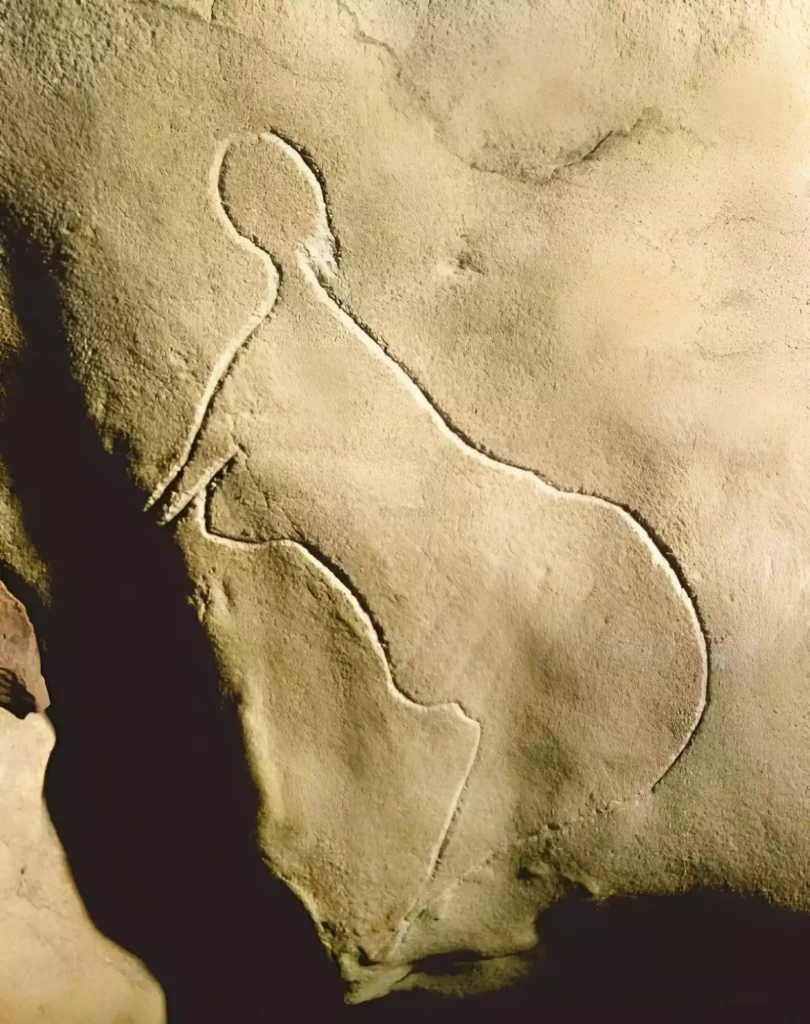The Cussac Cave, situated in the Dordogne region of southwestern France, harbors an ancient engraving known as the Venus of Cussac. This prehistoric artwork, estimated to be approximately 25,000 years old, belongs to the Upper Paleolithic period when early modern humans (Homo sapiens) resided in the area.
The Venus of Cussac takes the form of a female figure, commonly categorized as a “Venus” figurine, a prevalent motif in Upper Paleolithic art representing the female form. What sets this particular engraving apart is its direct incorporation into the cave wall, distinguishing it from other three-dimensional Venus figurines discovered from the same era.

The engraved depiction showcases a stylized representation of a woman with exaggerated and abstract features, such as a prominent abdomen and enlarged breasts. Scholars posit that these characteristics were likely intended to accentuate fertility and reproduction, imparting significance within the realm of prehistoric art. The figure also bears intricate patterns and lines, potentially carrying symbolic or ritualistic meanings.
Cussac Cave stands out for its extensive collection of prehistoric art, encompassing engravings, paintings, and drawings. It offers valuable insights into the artistic and cultural expressions of the inhabitants of the region during the Upper Paleolithic era.
Intriguingly, the Venus of Cussac may lay claim to being the origin of the first hand-drawn nudes!